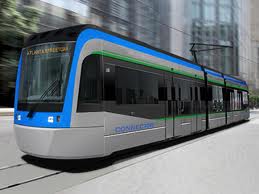PORTLAND, Ore. – Raised in Florida suburbs, J’ena SanCartier and Philip Losasso know Atlanta well — as the traffic jam they dreaded on their way to somewhere else.
Relocating from Florida last year, the artist and software developer never considered Atlanta. They flew 2,500 miles away to a new home in Portland. Now, instead of highways, they travel via streetcar. And that’s how they like it.
No: “love it,” in SanCartier’s words.
Multiply their story by thousands and you get a pretty good picture of one way Portland differs from Atlanta: since 2000 it has excelled at attracting young, educated, so-called “creative class” workers. The dominant reason, according to one narrative prevalent among city planners, is that young folks gravitate to high-energy, walkable, eclectic neighborhoods where they don’t need cars — and that projects like Portland’s streetcar help create those neighborhoods.
Architects of the Atlanta Beltline, a $602 million chunk of the July 31 regional transportation referendum, hail it as just such a cityscape-altering project. They even hired the man who wrote the Portland streetcar’s plan to write a plan for the Beltline.
“Portland, Oregon, is the model in the U.S.,” Atlanta Mayor Kasim Reed said in 2010, upon winning a grant to build a streetcar line that he called the “spine” of the Beltline. “We have strong evidence that infrastructure creates jobs and stimulates economic investment.”
But no project on the referendum list spurs more derision from its opponents, who view such projects as expensive toys that stifle rather than promote real prosperity.
“If every city and town in America tried to replicate what we’re doing in Portland you’d bankrupt the country,” said John Charles, a free-market opponent of the Portland streetcar. “It’s all propped up by state, federal and local subsidies.”
In nine days, voters across 10 metro Atlanta counties can help make the Beltline happen with the T-SPLOST vote.
© 2012, Eldorado2452. All rights reserved.












